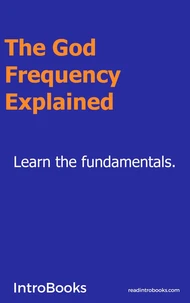Steady - State Model Of The Universe
Par :Formats :
Disponible dans votre compte client Decitre ou Furet du Nord dès validation de votre commande. Le format ePub est :
- Compatible avec une lecture sur My Vivlio (smartphone, tablette, ordinateur)
- Compatible avec une lecture sur liseuses Vivlio
- Pour les liseuses autres que Vivlio, vous devez utiliser le logiciel Adobe Digital Edition. Non compatible avec la lecture sur les liseuses Kindle, Remarkable et Sony
 , qui est-ce ?
, qui est-ce ?Notre partenaire de plateforme de lecture numérique où vous retrouverez l'ensemble de vos ebooks gratuitement
Pour en savoir plus sur nos ebooks, consultez notre aide en ligne ici
- FormatePub
- ISBN8223988915
- EAN9798223988915
- Date de parution29/08/2023
- Protection num.pas de protection
- Infos supplémentairesepub
- ÉditeurDraft2Digital
Résumé
In cosmology, the steady-state model believes that the universe is constantly expanding while keeping a steady average density. It also elaborates that matter is constantly being created to give shape to new stars and galaxies at about the same rate that old astronomical objects become invisible due to their progressive distance and rate of the downturn. A steady-state universe has no origin or endpoint in space.
Besides, the perspective on the grand scale, that is, the average density and organization of galaxies are identical from any location from inside. Galaxies of all eras are merged. Sir Hermann Bondi, Thomas Gold, and Sir Fred Hoyle, all British scientists, first proposed the model in 1948. Hoyle expanded on it to address issues that had surfaced in terms of the alternate big-bang theory. Since the 1950s, several studies, especially those of the cosmic microwave aspect, anticipated by the big-bang model, have produced abundant data contradicting the steady-state image, leading scientists to accept the big-bang hypothesis decisively.
Besides, the perspective on the grand scale, that is, the average density and organization of galaxies are identical from any location from inside. Galaxies of all eras are merged. Sir Hermann Bondi, Thomas Gold, and Sir Fred Hoyle, all British scientists, first proposed the model in 1948. Hoyle expanded on it to address issues that had surfaced in terms of the alternate big-bang theory. Since the 1950s, several studies, especially those of the cosmic microwave aspect, anticipated by the big-bang model, have produced abundant data contradicting the steady-state image, leading scientists to accept the big-bang hypothesis decisively.
In cosmology, the steady-state model believes that the universe is constantly expanding while keeping a steady average density. It also elaborates that matter is constantly being created to give shape to new stars and galaxies at about the same rate that old astronomical objects become invisible due to their progressive distance and rate of the downturn. A steady-state universe has no origin or endpoint in space.
Besides, the perspective on the grand scale, that is, the average density and organization of galaxies are identical from any location from inside. Galaxies of all eras are merged. Sir Hermann Bondi, Thomas Gold, and Sir Fred Hoyle, all British scientists, first proposed the model in 1948. Hoyle expanded on it to address issues that had surfaced in terms of the alternate big-bang theory. Since the 1950s, several studies, especially those of the cosmic microwave aspect, anticipated by the big-bang model, have produced abundant data contradicting the steady-state image, leading scientists to accept the big-bang hypothesis decisively.
Besides, the perspective on the grand scale, that is, the average density and organization of galaxies are identical from any location from inside. Galaxies of all eras are merged. Sir Hermann Bondi, Thomas Gold, and Sir Fred Hoyle, all British scientists, first proposed the model in 1948. Hoyle expanded on it to address issues that had surfaced in terms of the alternate big-bang theory. Since the 1950s, several studies, especially those of the cosmic microwave aspect, anticipated by the big-bang model, have produced abundant data contradicting the steady-state image, leading scientists to accept the big-bang hypothesis decisively.























